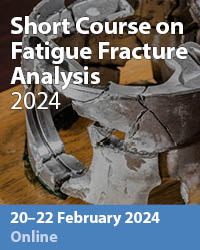Experimental And Computational Modelling Of Adhesion Strength In Composite Materials
Price
Free (open access)
Transaction
Volume
37
Pages
Published
2002
Size
444 kb
Paper DOI
10.2495/DM020401
Copyright
WIT Press
Author(s)
P Janícek & J Bursa
Abstract
Standardized tests for adhesion testing evaluate e.g. the pull - out force that enables us to compare adhesion strength of various materials. The results of tests are valid for the same sample shapes and dimensions only; the tests, where one of the geometric parameters of the sample differs, cannot be compared in this way. The results of these tests cannot be transformed into an adhesion strength that should be used as a limit value in computational modelling and in evaluation of damage risk. This limited scope of application is conditioned by stress concentration in the sample. Therefore, computational modelling was used to find another type of test which does not show any stress concentration on the material interface or which finally gives a uniform stress distribution in the whole contact surface. The computational modelling was realized for steel fibre in rubber matrix, i.e. materials showing a mismatch in moduli of elasticity on five orders. The Mooney-Rivlin material model was used for modelling the hyper-elastic behaviour of rubber. The most uniform stress distribution was found in some types of torsion tests. The results of these tests, realized experimentally with a different type of material combination, show a considerably low dependence of the adhesion strength, defined as the mean shear stress in the material interface before fracture, on the sample dimensions. The dependence of the adhesion strength on normal stress in the contact area was solved by means of computational - experimental modelling. 1 Introduction Computational modelling of limit states in non-homogeneous materials, e.g. fibre composites, laminates etc. is much more complex than in homogeneous
Keywords





